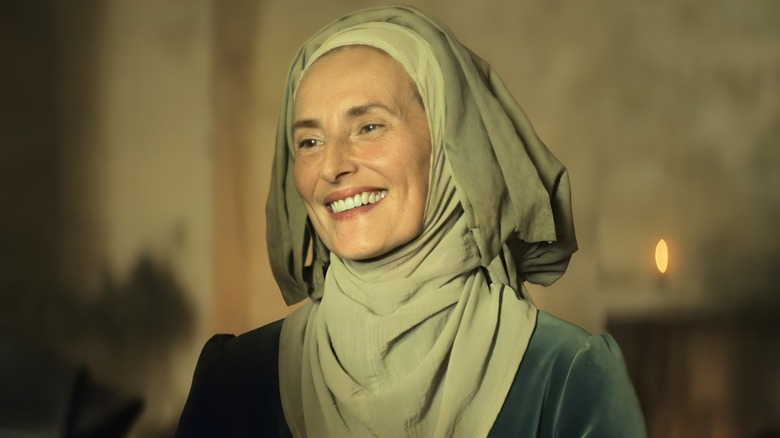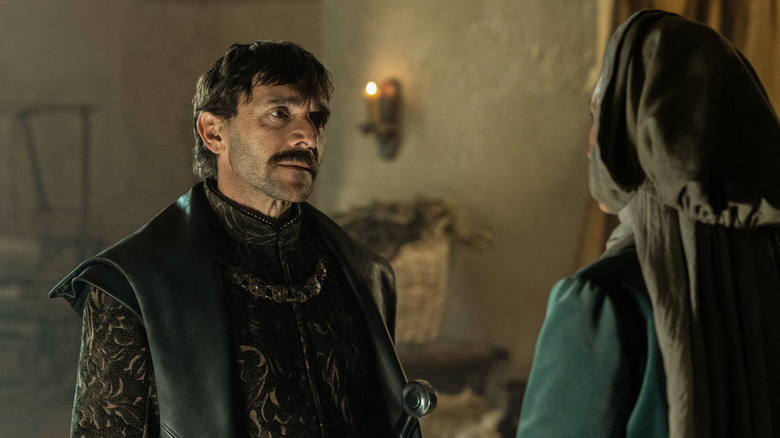Is Mrs. Davis' Ermengard Based On A Real Person?
Contains spoilers for "Mrs. Davis" Season 1, Episode 1, ""Mother of Mercy: The Call of the Horse"
When we meet Ermengard (Rachel Lascar) in Season 1, Episode 1 of "Mrs. Davis," she's not helping fearless nun Simone (Betty Gilpin) with her quest, but laughing at a soldier who is demanding that she turn over the Holy Grail. Thereafter she and the rest of the Templar women prove that they shouldn't be underestimated, as they fight back against the dozens of men that have stormed their nunnery. While this Ermengard may just be part of Peacock's mesmerizing new series, there actually was a real Templar named Ermengarda d'Oluja.
According to the book "Hospitaller Women in the Middle Ages," "Ermengarda lived in the 12th century and was married to the lord of Vallfogona, Gombau d'Oluja. In 1196 the couple gave the Templars their property, as well as joined the Temple at Barberà. Gombau is assumed to have died shortly thereafter, but Ermengarda reappears in records as the female leader of the house of Rourel in Catalunya. She is very unique in the history of the Templars, as a full sister and the first woman to command both men and women at Rourel.
Ermengarda d'Oluja became a female commander
Along with the Templar rules that explicitly forbade women from becoming Templar sisters, there is much evidence to suggest that the Templar Knights had a misogynist attitude towards women, according to the book "The Templars and the Grail: Knights of the Quest." Some Templars stuck fast to the rules, but others were more pragmatic, realizing that women could bring in useful connections for the Order, as well as donations of property and valuables.
Women often became members of the Order by first becoming associates, either with their husbands or because they made donations to the Templars. Some of these women, such as Adelheide of Wellheim, chose to live out the rest of her life at the Temple of Moritzbrunn. Because she was the ex-wife of a Templar, her wish was granted. Along with these lifelong sisters that were cared for, there was also a clearly labeled Templar nunnery that existed at Mühlen, in Austria, according to the book "The Everyday Life of the Templars."
Because the Templars didn't keep journals or write about themselves, there isn't much that is known about Ermengarda d'Oluja, such as her personality or what kind of commander she was. All we know is that she did exist, and as the Rourel house leader, she rose higher in the Templars than even most men.

